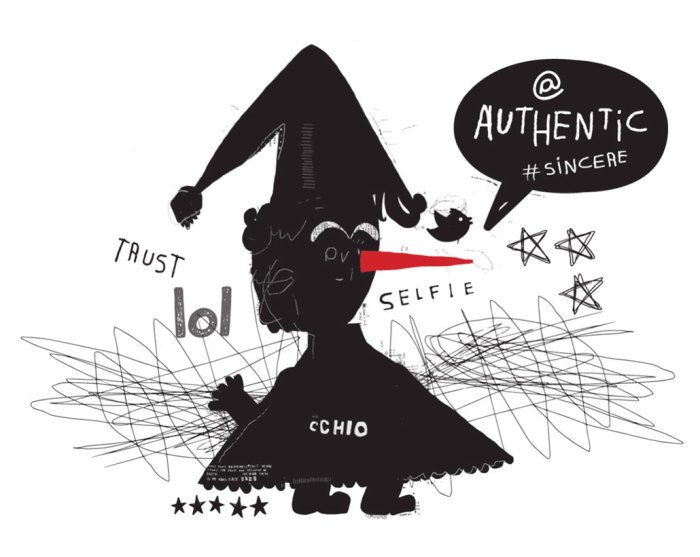The ways we lie ericsson – As “The Ways We Lie” by Ericsson takes center stage, this opening passage beckons readers into a world crafted with meticulous detail and insightful prose, ensuring a reading experience that is both captivating and distinctly original.
This thought-provoking novel delves into the intricate web of deception, exploring its various forms, motivations, and far-reaching consequences. Prepare to embark on a journey that will challenge your perceptions of truth, honesty, and the ethical dilemmas that surround the act of lying.
The Nature of Deception in “The Ways We Lie”
Deception permeates the narrative of “The Ways We Lie,” manifesting in diverse forms and serving various purposes. Characters employ lies to conceal truths, manipulate others, and protect themselves or loved ones. Understanding the motivations and consequences of these deceptive acts sheds light on the complex nature of human behavior and the moral dilemmas that arise.
Types of Deception
- Omission:Concealing or withholding information to create a misleading impression.
- Exaggeration:Embellishing or exaggerating the truth to enhance one’s image or achieve a desired outcome.
- Fabrication:Creating false information or stories to deceive others.
li> Half-truths:Revealing only partial information while omitting crucial details that would alter the perception of the truth.
Motivations for Deception
Deception is often driven by a desire to protect oneself, gain an advantage, or avoid negative consequences. Characters may lie to:
- Self-preservation:Protecting their reputation, relationships, or physical well-being.
- Personal gain:Achieving financial success, social status, or romantic pursuits.
- Fear:Avoiding punishment, rejection, or social ostracism.
- Compassion:Protecting others from emotional pain or harm.
Consequences of Deception
While deception may provide short-term benefits, it often has far-reaching consequences. Lies can:
- Damage relationships:Undermine trust and lead to estrangement.
- Erode self-esteem:Create feelings of guilt, shame, and loss of self-worth.
- Have legal repercussions:If deception involves criminal activity or fraud.
- Perpetuate a cycle of deception:Encourage others to lie to maintain the illusion of truth.
Ultimately, “The Ways We Lie” explores the complex interplay between truth and deception, revealing the motivations and consequences of human dishonesty. Through its characters’ actions, the novel challenges readers to confront their own attitudes towards lying and to consider the ethical implications of their choices.
The Role of Communication in Deception
Communication plays a crucial role in both facilitating and hindering deception in “The Ways We Lie.” Characters use language strategically to manipulate and conceal the truth, while the novel also explores the ways in which communication can reveal deception.
Communication Facilitating Deception
Communication can facilitate deception by providing a means for characters to create and maintain false narratives. Through verbal and nonverbal cues, characters can manipulate others’ perceptions and influence their beliefs.
- Verbal Communication:Characters use language to create misleading or incomplete accounts of events, conceal their true intentions, and plant false information.
- Nonverbal Communication:Characters’ body language, facial expressions, and tone of voice can convey hidden messages and reinforce deceptive statements.
Communication Hindering Deception
Despite its role in facilitating deception, communication can also hinder it. Miscommunication, misunderstandings, and inconsistencies in language can reveal discrepancies in characters’ stories and expose their attempts at deception.
- Miscommunication:Misunderstandings due to unclear or ambiguous language can lead to unintended disclosures of information that could hinder deception.
li> Inconsistencies:Characters’ accounts of events may contain inconsistencies or contradictions, which can raise suspicion and undermine their credibility.
The Impact of Social Context on Deception

Deception is not only an individual act; it is also shaped by the social context in which it occurs. Social norms and expectations can influence whether people lie, what kind of lies they tell, and how they justify their deceptive behavior.
The novel “The Ways We Lie” offers insights into the complex relationship between social context and deception.
One way that social context influences deception is through the establishment of norms and expectations. In certain social groups, lying may be considered acceptable or even necessary to maintain harmony or avoid conflict. For example, in cultures that emphasize politeness, people may be more likely to lie to avoid hurting someone’s feelings or to preserve social order.
The Role of Social Norms, The ways we lie ericsson
Social norms are unwritten rules that govern behavior within a society or group. These norms can vary widely from culture to culture, and they can have a significant impact on the way that people lie. In some cultures, for example, lying is considered to be a serious moral transgression, while in other cultures it is seen as a necessary evil.
The novel “The Ways We Lie” explores the role of social norms in deception, showing how they can both encourage and discourage honesty.
The Influence of Social Expectations
Social expectations can also influence deception. When people believe that they are expected to lie, they are more likely to do so. This is because they may feel pressure to conform to the expectations of others, or they may fear that they will be punished if they do not lie.
The novel “The Ways We Lie” illustrates the power of social expectations, showing how they can lead people to lie even when they know that it is wrong.
The Moral and Ethical Dimensions of Deception: The Ways We Lie Ericsson
The Ways We Liepresents complex ethical dilemmas surrounding deception. It challenges traditional notions of right and wrong, exploring the boundaries between truth and falsehood, honesty and dishonesty.
As Ericsson’s work explores the intricacies of human deception, it’s intriguing to note how literature captures similar themes. Take leaves by Elsie N. Brady , where the delicate interplay of truth and falsehood unfolds through the symbolism of leaves. Returning to Ericsson’s research, it highlights the complexities of self-deception and the impact of our lies on ourselves and others.
The Ethics of Deception
The novel raises questions about the ethics of lying in various situations. It examines the circumstances in which deception may be justified, such as protecting others or avoiding harm. The characters’ motivations and intentions play a crucial role in shaping the ethical implications of their actions.
The Impact on Relationships
Deception can have devastating consequences for relationships. The novel explores how lies can erode trust, create suspicion, and damage the bonds between people. It examines the ways in which deception can poison communication and make it difficult to build genuine connections.
The Psychological Effects of Deception

Deception, the act of misleading or withholding information, can have significant psychological consequences for individuals and relationships. It can erode trust, damage intimacy, and create feelings of guilt and shame.
The Toll on Individuals
Deception can take a psychological toll on individuals in several ways. It can:
- Damage self-esteem:Engaging in deception can lead to feelings of inadequacy and worthlessness, as individuals question their own integrity.
- Create guilt and shame:Deceiving others can trigger feelings of guilt and shame, especially if the deception is significant or has negative consequences.
- Increase anxiety and stress:The fear of being discovered or the consequences of deception can lead to increased anxiety and stress levels.
- Impair relationships:Deception can damage relationships by eroding trust and creating barriers to intimacy.
The Impact on Relationships
Deception can also have a profound impact on relationships. It can:
- Undermine trust:Deception destroys trust, which is the foundation of healthy relationships.
- Create distance and isolation:Deception can lead to emotional distance and isolation, as individuals may withdraw from relationships to avoid further deception.
- Increase conflict and tension:Deception can create conflict and tension within relationships, as individuals struggle to deal with the betrayal of trust.
- End relationships:In severe cases, deception can lead to the end of relationships, as individuals may no longer be able to trust or forgive the deceiver.
It is important to note that the psychological effects of deception can vary depending on factors such as the severity of the deception, the relationship between the deceiver and the deceived, and the individual’s own coping mechanisms.
The Cultural Significance of Deception

In “The Ways We Lie,” deception is deeply embedded within the cultural context. The novel reflects the historical and contemporary attitudes towards lying, highlighting its prevalence and complexity in human interactions.
Historical Context
The novel’s historical setting in the 1960s and 1970s influences its portrayal of deception. During this period, social and political upheavals led to a questioning of traditional values and norms. The novel captures this cultural shift, depicting a society where lying is increasingly seen as a necessary tool for survival and advancement.
Contemporary Context
The novel also resonates with contemporary cultural attitudes towards deception. In an era of fake news and social media manipulation, the novel highlights the pervasive nature of lying in modern society. It explores the ways in which deception has become both more sophisticated and more accessible, raising questions about the boundaries between truth and falsehood.
Cultural Values
“The Ways We Lie” delves into the cultural values that shape attitudes towards deception. In some cultures, lying is considered a grave offense, while in others, it may be tolerated or even expected in certain situations. The novel explores the ways in which cultural norms influence the perception and practice of deception.
Social Consequences
The novel also examines the social consequences of deception. It shows how lying can damage relationships, undermine trust, and disrupt society. The novel highlights the importance of honesty and transparency in maintaining healthy social interactions.
Literary Devices and Techniques in “The Ways We Lie”

In “The Ways We Lie,” the author employs a myriad of literary devices and techniques to convey the complex and multifaceted themes of deception. These devices effectively create a compelling and thought-provoking narrative, inviting readers to delve into the intricacies of human nature and the pervasive role of deception in our lives.
One notable device is the use of foreshadowing, where subtle hints and clues are woven into the narrative, gradually building tension and suspense. For instance, the recurring motif of “the lie that tells the truth” foreshadows the complex interplay between truth and deception, suggesting that even the most honest of intentions can be tainted by hidden motives.
Symbolism
Symbolism also plays a crucial role in the novel. Objects, characters, and events are imbued with deeper meanings that resonate throughout the narrative. For example, the “spider web” symbolizes the intricate web of deception that entangles characters, while the “mirror” represents the fractured and distorted perceptions of truth and reality.
Characterization
The characters themselves are carefully crafted to embody different aspects of deception. The protagonist, Dr. Caldwell, is a renowned psychologist who struggles with his own moral dilemmas and the consequences of his actions. Through his journey, the novel explores the psychological complexities of deception, including the motivations, rationalizations, and self-justifications that drive people to lie.
Metaphor and Imagery
Metaphor and imagery are also employed to create vivid and evocative descriptions of deception. The author compares deception to a “disease” that spreads through society, corrupting individuals and relationships. Through these powerful literary devices, the novel conveys the pervasive and insidious nature of deception, leaving readers with a haunting sense of its consequences.
FAQ Insights
What are the different types of deception depicted in the novel?
The novel explores various types of deception, including intentional misrepresentation, self-deception, and omission of truth.
How does communication facilitate and hinder deception?
Communication plays a crucial role in both facilitating and hindering deception. It can be used to manipulate and conceal the truth, but it can also be used to expose lies and promote honesty.
What is the impact of social context on deceptive behavior?
Social norms and expectations can significantly influence deceptive behavior. The novel portrays how society can both encourage and discourage honesty, depending on the situation.